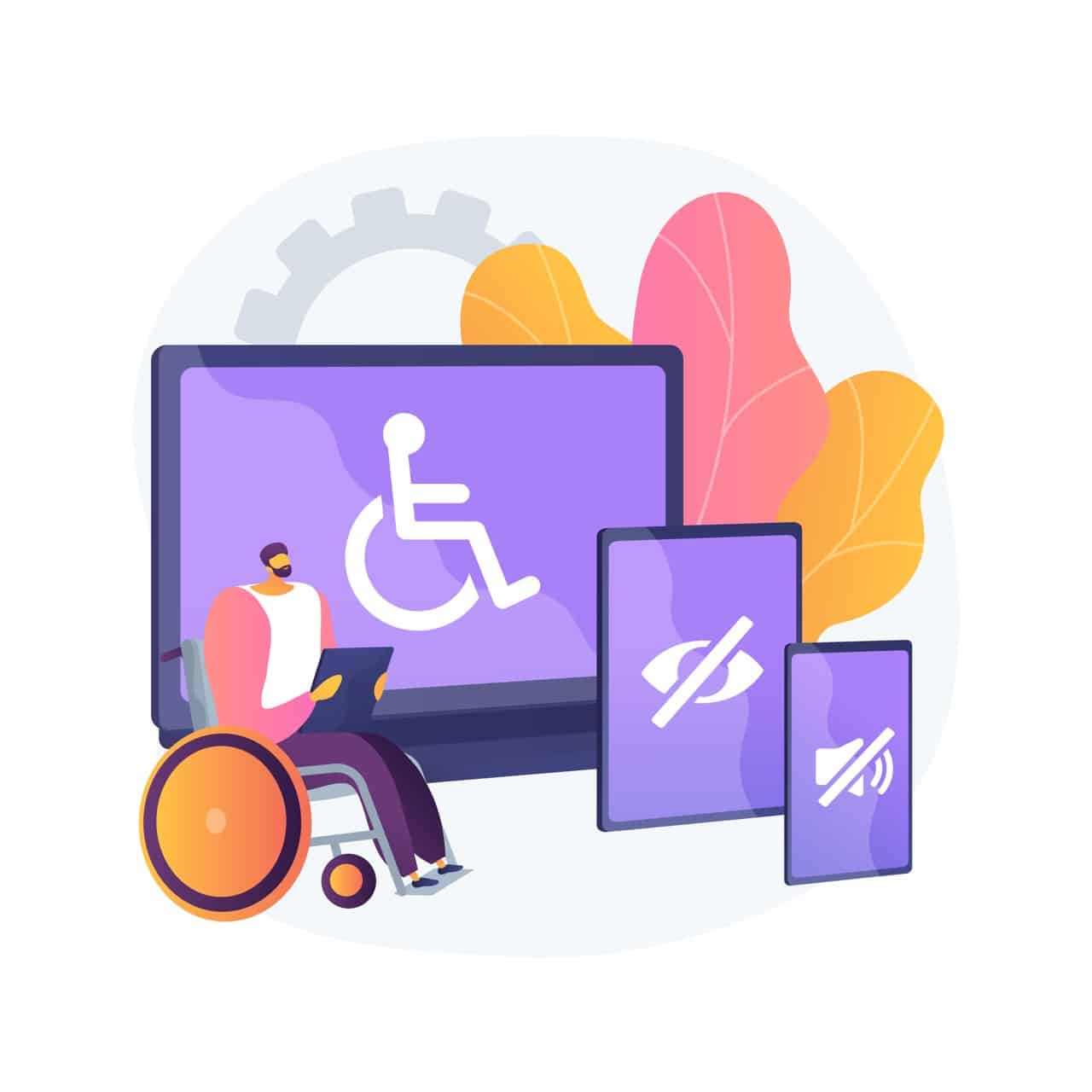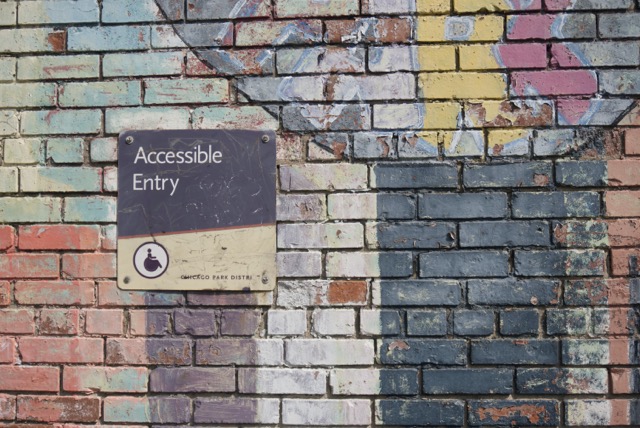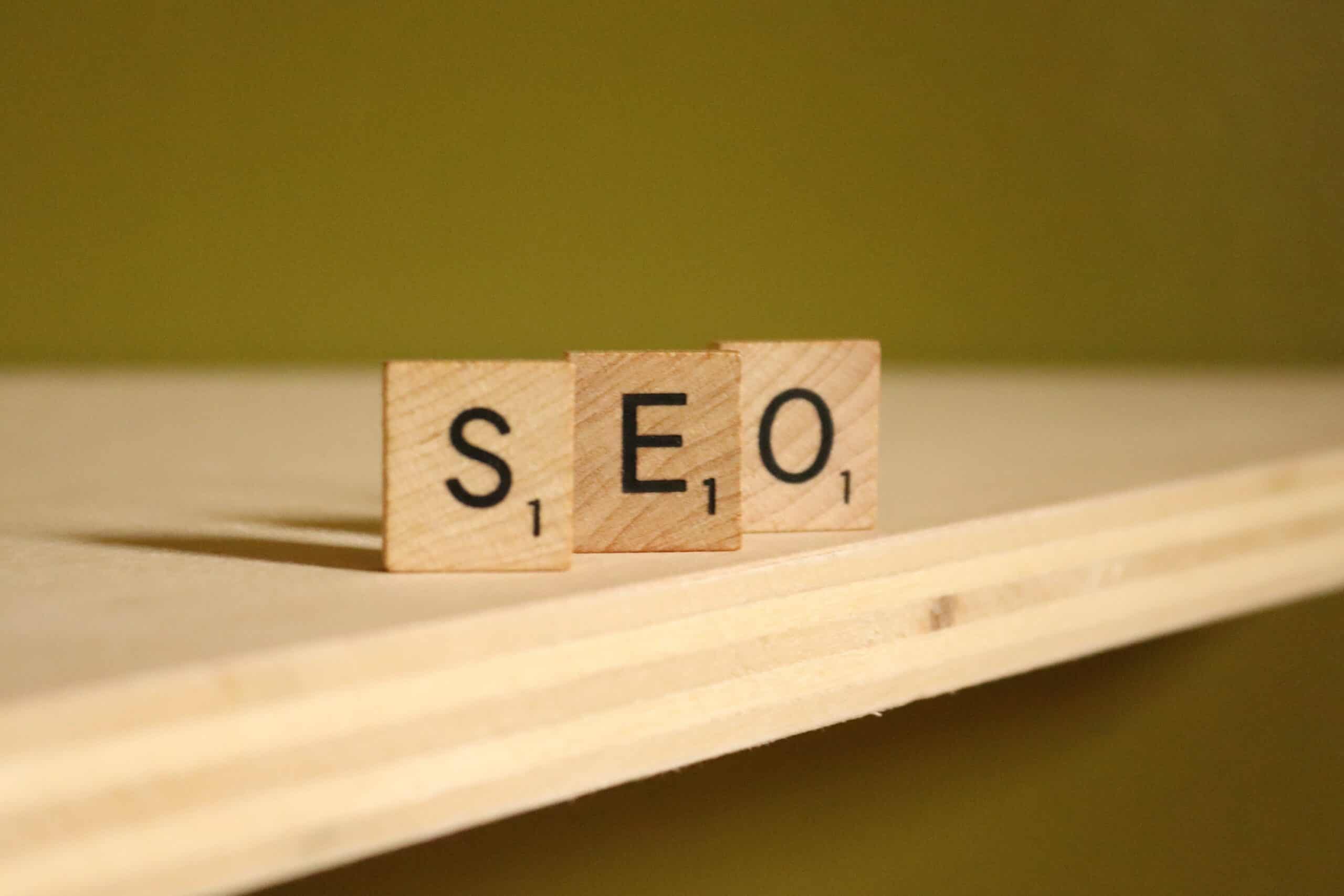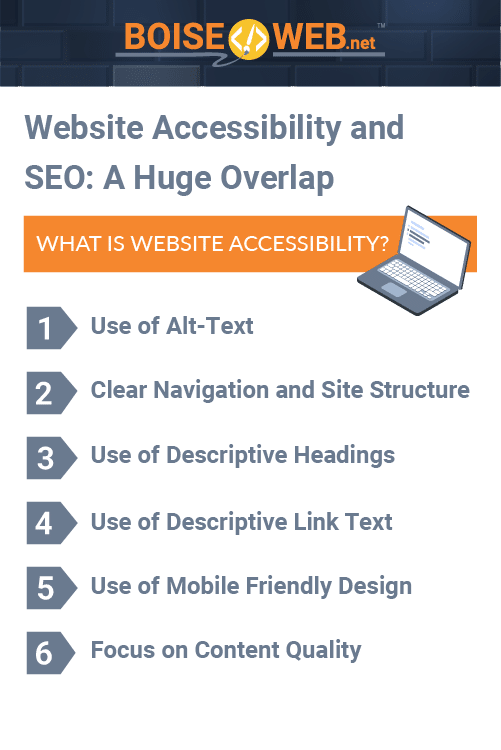In today’s digital age, websites are an essential part of any business’s success. However, designing a website that is both accessible and SEO-friendly can be challenging. While accessibility and SEO may seem like two unrelated concepts, they overlap in many ways.
What is Website Accessibility?
Website accessibility refers to the practice of designing websites to be usable and navigable by people with disabilities. This includes individuals who may have visual, auditory, or motor impairments, as well as those who may have cognitive or neurological disabilities.
The Americans with Disabilities Act (ADA) is a federal law in the United States that prohibits discrimination against individuals with disabilities in all areas of public life, including employment, education, and access to goods and services. This includes access to websites and digital content, which are considered a form of public accommodation under the ADA.
In 2010, the Department of Justice (DOJ) issued regulations under the ADA that established guidelines for website accessibility. These guidelines, known as the Web Content Accessibility Guidelines (WCAG), provide a set of technical standards for making websites and digital content accessible to people with disabilities.
To avoid legal liability and ensure that their websites are accessible to all users, businesses and organizations should strive to meet the WCAG guidelines for website accessibility. This may include practices such as providing alternative text for images, ensuring that website content can be navigated with a keyboard, and making sure that website design is compatible with assistive technologies such as screen readers.
What is Search Engine Optimization (SEO)?
SEO stands for Search Engine Optimization. It is the practice of optimizing a website or online content to increase its visibility and ranking in search engine results pages (SERPs). The goal of SEO is to improve the quantity and quality of organic traffic to a website from search engines such as Google, Bing, and Yahoo.
Search engines use complex algorithms to determine which websites and content should appear at the top of search results for a given query. SEO involves understanding how these algorithms work and implementing strategies that improve a website’s relevance and authority for targeted keywords and phrases.
There are many factors that contribute to a website’s SEO, including:
- On-page optimization: This includes factors such as the quality of the content, the use of relevant keywords, the structure of the website, and the optimization of images and videos.
- Off-page optimization: This includes factors such as the quality and relevance of external links pointing to the website, social media signals, and other external factors that contribute to the website’s authority and reputation.
- Technical optimization: This includes factors such as website speed, mobile-friendliness, security, and other technical aspects of website design that can impact a website’s performance in search results.
SEO is an ongoing process that requires ongoing monitoring and adjustment. By improving a website’s SEO, businesses and organizations can increase their visibility and reach more potential customers through organic search results.
How do Website Accessibility and SEO Overlap?
Website accessibility refers to the practice of designing websites to be accessible to individuals with disabilities, such as those with visual, auditory, or motor impairments.
In contrast, SEO (Search Engine Optimization) refers to the practice of optimizing websites to rank higher in search engine results pages (SERPs). While these two concepts may appear to have little in common, they are closely related when it comes to website design.
Website accessibility and SEO overlap in several ways, as both are focused on improving the user experience and making websites more accessible to a wider range of users.
Here are some of the key ways in which website accessibility and SEO overlap:
- Use of alt-text
- Clear navigation and site structure
- Use of descriptive headings
- Use of descriptive link text
- Use of mobile friendly design
- Focus on content quality
Use of Alt-Text
Alt text, also known as alternative text or alternative attributes, is used in both website accessibility and SEO to describe images and other non-text content on a website. Alt text provides a textual alternative to visual content and is used by screen readers and other assistive technologies to help users with disabilities access the content of a webpage.
In website accessibility, alt text is a critical component of making images and other non-text content accessible to users with disabilities. By providing a textual alternative to visual content, alt text helps users who are blind or visually impaired understand the content of a webpage. Alt text can also benefit users with other disabilities, such as cognitive or neurological disabilities, who may have difficulty processing visual information.
In SEO, alt text is used to help search engines understand the content of a webpage. Search engines cannot “see” images and other non-text content, so they rely on alt text to understand what an image is about. By including relevant keywords in alt text, webmasters can improve the SEO of a webpage and increase its visibility in search results.
It’s important to note that alt text should be descriptive and relevant to the content of the image and should not be used for spamming or keyword stuffing. Alt text should also be kept concise and to the point and should accurately convey the purpose or content of the image.
Clear Navigation and Site Structure
Clear navigation and site structure refer to the organization and presentation of a website’s content and functionality, in a way that is easy for users to understand and interact with. This includes the way pages are organized and linked, the labeling and ordering of navigation menus, and the use of visual cues and hierarchy to guide users through the site.
In terms of navigation, a clear site structure includes a logical and intuitive hierarchy of pages and links that is easy to follow. This can include main navigation menus at the top of the page, as well as sub-menus and related links within the page content. Navigation should be consistent throughout the site, with clear labeling and descriptions that accurately reflect the content of each page.
A clear site structure also involves the presentation of content in a way that is easy to understand and follow. This can include the use of headings, subheadings, and other visual cues to break up text and organize information into logical sections. Clear site structure can also involve the use of white space, colors, and typography to create a clear and visually appealing layout.
In website accessibility, clear navigation and site structure are essential for making a website accessible to all users, including those with disabilities. People with disabilities often rely on keyboard navigation or assistive technology to access a website, and a clear site structure and navigation make it easier for them to find the information they need. Additionally, clear headings and subheadings help users with disabilities understand the content and structure of a webpage. For example, a screen reader user can quickly jump from one section to another by using the headings on the page.
In SEO, clear navigation and site structure are also important for SEO. Search engines use crawlers to scan a website’s pages and index their content. If a website has a clear site structure and navigation, it makes it easier for search engine crawlers to understand the content and organization of the site. This, in turn, can improve the website’s visibility and ranking in search results.
Additionally, clear navigation and site structure make it easier for users to find the information they need on a website. This improves the user experience and can increase user engagement and retention on the site, which are factors that can also contribute to better SEO.
Use of Descriptive Headings
Descriptive headings are text elements on a webpage that are used to introduce and organize sections of content. They are typically displayed in a larger font size, bolded, or formatted differently than the surrounding text to make them stand out. The purpose of descriptive headings is to provide an overview of the content on the page, and to break it up into sections that are easier to navigate and understand.
In website accessibility, descriptive headings make it easier for people with disabilities to navigate and understand the content of a website. Screen reader users, for example, rely on headings to navigate through the content of a page. By using descriptive headings, website owners can ensure that users with disabilities can quickly and easily find the information they need on a page.
In addition, descriptive headings can improve the overall readability of a page. Headings help break up long blocks of text into smaller, more manageable sections, which can make it easier for all users, including those with cognitive disabilities, to understand the content.
In SEO, descriptive headings are also important for SEO. Search engines use headings to understand the structure and hierarchy of a webpage. By using descriptive headings that accurately reflect the content of the page, website owners can help search engines better understand the content and relevance of the page. This, in turn, can improve the page’s visibility and ranking in search results.
Additionally, descriptive headings can help website owners target specific keywords and phrases for SEO purposes. By including relevant keywords in headings, website owners can signal to search engines what the page is about and increase the likelihood of the page ranking for those keywords.
Use of Descriptive Link Text
Descriptive link text is a text element used in a hyperlink that provides users with information about the content of the linked page or resource. It is typically underlined and displayed in a different color than surrounding text and may also include an icon or other visual cue to indicate that it is a clickable link.
Descriptive link text is important for both website accessibility and SEO, as it helps users understand the purpose and destination of the link, and it helps search engines understand the relevance and context of the linked page. Here are some ways descriptive link text is used in both website accessibility and SEO:
In website accessibility, users with visual impairments or other disabilities may rely on screen readers or other assistive technologies to navigate websites. Descriptive link text helps these users understand the purpose and destination of links, without having to rely on visual cues. For example, a link that says, “Click here” or “Read more” is not very helpful, as it does not provide any context or information about where the link leads. A more descriptive link such as “Learn more about our products” or “Visit our customer support page” provides users with a clear understanding of the linked content.
In SEO, search engines use link text to understand the content and context of pages, and to determine the relevance and authority of a site. Descriptive link text that includes relevant keywords or phrases can help search engines understand the content and relevance of the linked page and can improve the site’s visibility and ranking in search results. For example, a link that says, “Best digital cameras” is more likely to be relevant to a user searching for information on digital cameras than a link that says, “Click here.”
Use of Mobile Friendly Design
Mobile-friendly design is the practice of designing a website that can be easily viewed and used on mobile devices such as smartphones and tablets. Mobile-friendly design is important for both website accessibility and SEO, as it ensures that the site is accessible and usable to users on a wide range of devices, including those with smaller screens and limited connectivity.
In website accessibility, many users with disabilities rely on mobile devices as their primary means of accessing the internet. A mobile-friendly website ensures that these users can access the site and its content, regardless of the device they are using. Mobile-friendly design also helps users with physical disabilities or limited dexterity to navigate the site using touchscreens or other mobile input methods.
In SEO, Google and other search engines prioritize mobile-friendly websites in their search rankings, as they recognize the importance of mobile accessibility and usability for users. Mobile-friendly design can improve a website’s SEO by improving its visibility and ranking in mobile search results. In addition, a mobile-friendly site is more likely to attract and retain users, which can also improve its search engine ranking over time.
The focus on quality content is important for both website accessibility and SEO, as it ensures that the site provides valuable and relevant information to users and helps search engines understand the purpose and relevance of the site.
In website accessibility, users with disabilities may have difficulty accessing or understanding certain types of content, such as videos or images. By providing high-quality written content, website owners can ensure that users with disabilities are able to access and understand the site’s content. High-quality written content also helps users with cognitive disabilities or limited literacy skills understand the purpose and meaning of the site’s content.
In SEO, search engines prioritize sites that provide high-quality, relevant content to users. By focusing on quality content, website owners can improve their site’s visibility and ranking in search results and attract more organic traffic. High-quality content also helps search engines understand the purpose and relevance of the site’s content and can improve its ranking for relevant keywords and topics.
In summary, website accessibility and SEO overlap in many ways, as both are focused on improving the user experience and making websites more accessible to a wider range of users. By implementing best practices for website accessibility and SEO, businesses and organizations can improve their website’s performance in search results and provide a better user experience for all users, regardless of their abilities.
The author generated this text in part with GPT-3, OpenAI’s large-scale language-generation model. Upon generating draft language, the author reviewed, edited, and revised the language to their own liking and takes ultimate responsibility for the content of this publication.





